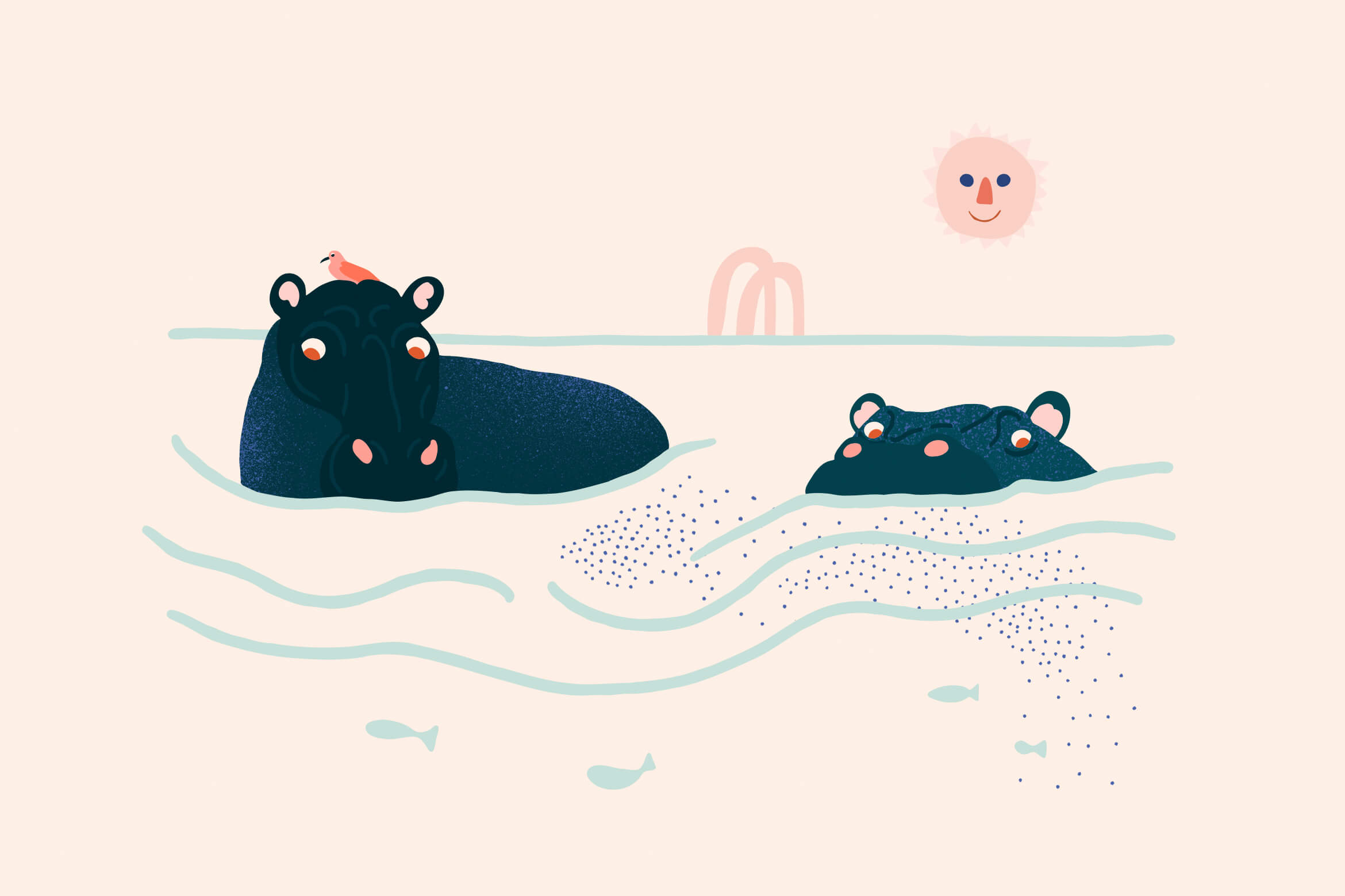How we teach kids to overcome the fear of going under the water.
Swimming without going under the water is a big mistake. Until you fully immerse yourself in water, there's a barrier holding you back from experiencing it's wonders.
We see this with kids who've yet to put their face under the water. Kids know it's supposed to be fun, but there's also apprehension and fear. It's evident even if they've been relying on floatation devices to keep them propped above it. This isn't swimming. Until you go under the water, you're missing out on the joy of being free. Of learning to trust it, keeping a barrier between you and the water in place.
That obstacle is clear in adults that swim while keeping their head always above the surface. Not having had the opportunity to learn how to embrace the water, they've developed a fearful, nervous relationship to it.
It's most likely at a young age when we experience something with the water that reinforces that fear. It may be an anxious parent, experiencing a new environment, a lack of access, or an accidental inhaling of water at home, in the pool or at the beach. Most kids relate putting their head under the water with a scary or uncomfortable memory.
Yet, going under the water changes everything.
This wasn't always our thinking at In The Deep. Over the span of twenty years, we've realised if you don't focus on kids going under the water, both time and money is wasted.
Early on, like most of the swimming industry, our focus was all about propulsion. We were teaching dog paddle, a style where you had to get yourself to a wall or teacher quick! It became about the strength of your propulsion that got you there.
But kids lack the proprioception skills to be able to feel where they're positioned in the water. Some don't have the physical strength to keep their head above the surface.
Dog paddle teaches kids to not relax. It teaches them to frantically move towards something in the water they can hold on to. This isn't safe, nor is it relaxing.
We embraced a new method of teaching inspired by the US-based, Hubbard Family Swim School. They showed us kids could experience learning to swim and learn to find ease in the water whilst doing so.
Rather than focus on propulsion, children learn to relax with their face in the water. Once we're over the biggest obstacle, we teach them to roll over and float. We've seen so many children blossom when we teach with this philosophy in mind. It's beautiful to see kids at ease in the water without any fear.
The beginnings of this beautiful relationship with the water comes with facing one of the biggest obstacles in learning to swim, going under the water!
Because kids can be a little scared and distrusting, we're careful to ensure they don't have another bad experience inhaling water.
One thing we discourage is "blowing bubbles". As soon as you're exhaling your air, the natural reaction is to inhale.
We begin with what we call Pufferfish Face. We take a big breath and puff our cheeks up. That teaches kids to hold their breath. They don't end up inhaling, because they're busy holding their breath.
Depending on their stage of confidence we do this out of the water, and use a cup to pour water gently over their face. We then move to putting their mouths in the water. They still feel safe because their eyes aren't also submerged. This we call being a hippo. We try to make it fun, pretending we're little hippos or crocodiles. Kids respond well in a play-based learning environment.
We then use our verbal cue, "1, 2, 3, under!" to go fully under, eyes and ears submerged. Putting your face in the water, we've now graduated to being a fish!
It's inevitable we're met with resistance along the way.
We try to gently guide them to explore beneath the surface. Going under the water is the biggest obstacle kids need to overcome. For this reason we take it slowly depending on where their confidence is at.
It also takes commitment and reinforcement. They'll resist, sure. However much they push back, we find we're most successful if we don't give them an opportunity to bail out. If you're there supporting them, championing them through the process, the result is an empowered child who has overcome their fear. How incredible is that?!
You can help this along at home, too.
If you're working with a swim school, you'll want to check with them to see what their verbal trigger is for going under the water. Or you can use ours if you're yet to enrol in lessons: "1, 2, 3, under!"
That verbal cue helps prepare them mentally for going under the water. We suggest getting in the shower and trying Pufferfish Face and using the cue to duck under the shower. You could do it in a bath with a cup too.
Whatever you do, do it in incremental steps and make it fun! Turn it into a game. Do it three times, and get a big high five, or read them their favourite story!
If your child is frightened, teaching them to relax and be calm around bathing time is the best thing you can do.
Our method works for most extreme cases, too.
We've had kids who've tried on and off for years. We'll have them going under the water before you know it. By building their confidence and with very clear, slow steps, we encouragingly push them out of their comfort zone. All with a lot of love of course! We want to empower them to overcome their fears.
Once they move beyond this obstacle, they fall in love with it.
It becomes a different world for them.
You know the drill. Once they're under, they never get out. Thank goodness they need to breathe, we'd never see them again! The weightlessness of the water makes swimming so much fun for kids. We like to think it's how adults would experience being in space for the first time. They can do crazy and fun things, all supported by this incredible element!
They can do headstands, they can dive under. They can do 50 summersaults in a row without breaking a sweat! Where else can you just jump into something, knowing you aren't going to hurt yourself (unless of course, it's an intentional belly flop!).
Embracing the water is such a sensory celebration.
The beautiful thing about going under the water and then finding your buoyancy to float, is that you learn to trust it. The water can be a scary place, a place of trauma, until you learn to let go. When you surrender to it, knowing it'll have your back, it becomes the most fun place to be in the world!
Sea you in the water!
x Sasha



No comments.